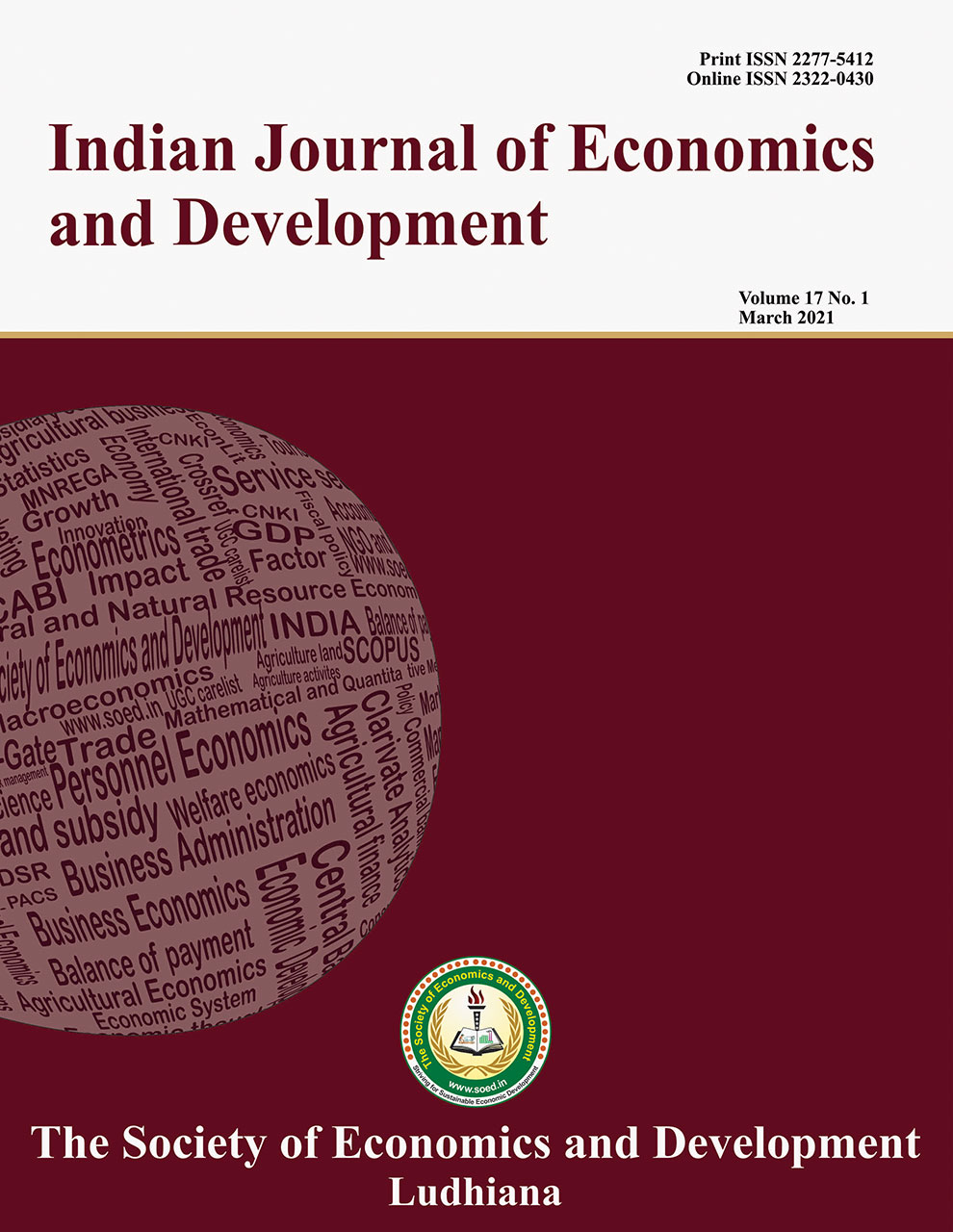Are the Indian Ragi Markets Integrated?

Price: ₹ 500
Author: N. Venkatesa Palanichamy , B. Dayakar Rao , D. Murugananthi, A.Rohini , Alka Singh , K. Suhashini , N. Anuradha and T.M. Dinesh
Author Address: Department of Agricultural and Rural Management, Tamil Nadu Agricultural University, Coimbatore -641 003, Indian Institute of Millet Research, Hyderabad, Division of Agricultural Economics, Indian Agricultural Research Institute, New Delhi-11012, Profe
Keywords: Agricultural price, efficiency, market integration, millets
JEL Codes: C22, Q13
Abstract
The Indian consumers and policymakers recognized finger millet (Ragi) increasingly as a nutritious staple. Karnataka, Uttrakhand, Maharashtra, and Tamil Nadu are the major ragi producing States contributing 90 percent of the Indian Ragi production. Various initiatives in recent years have aimed at promoting agricultural market integration. The present study aimed at testing the integration across the ragi markets in Tamil Nadu. The ADF test was used to assess the stationarity, Johansen cointegration, and the VECM model was used to analyze the long-term cointegration among the markets. Granger causality was used to assess the direction of the flow of information across markets. All the price series were first difference stationary. There existed two cointegration equations depicting the long-term integration across the markets. In the majority of the selected markets, a bidirectional flow of information was observed. Chinthamani and Tumkur markets error correction coefficients were significant, indicating that they will return to equilibrium in the short run by making corrections. Chinthamnai price influenced the Tumkur, Hosur, and Denkanikottai price at one month lag. The Tumkur price was influenced by its one-month lag and Hosur and Vellore one-month lag price. Tumkur and Vellore influence Hosur price by one month lag. The analysis found that Indian ragi markets were integrated in the long run.
Description
Indian Journal of Economics and Development
Volume 17 No. 3, 2021, 659-664
DOI: https://doi.org/10.35716/IJED/20297
Indexed in Clarivate Analytics (ESCI) of WoS
Scopus: Title Accepted
NAAS Score: 5.15



